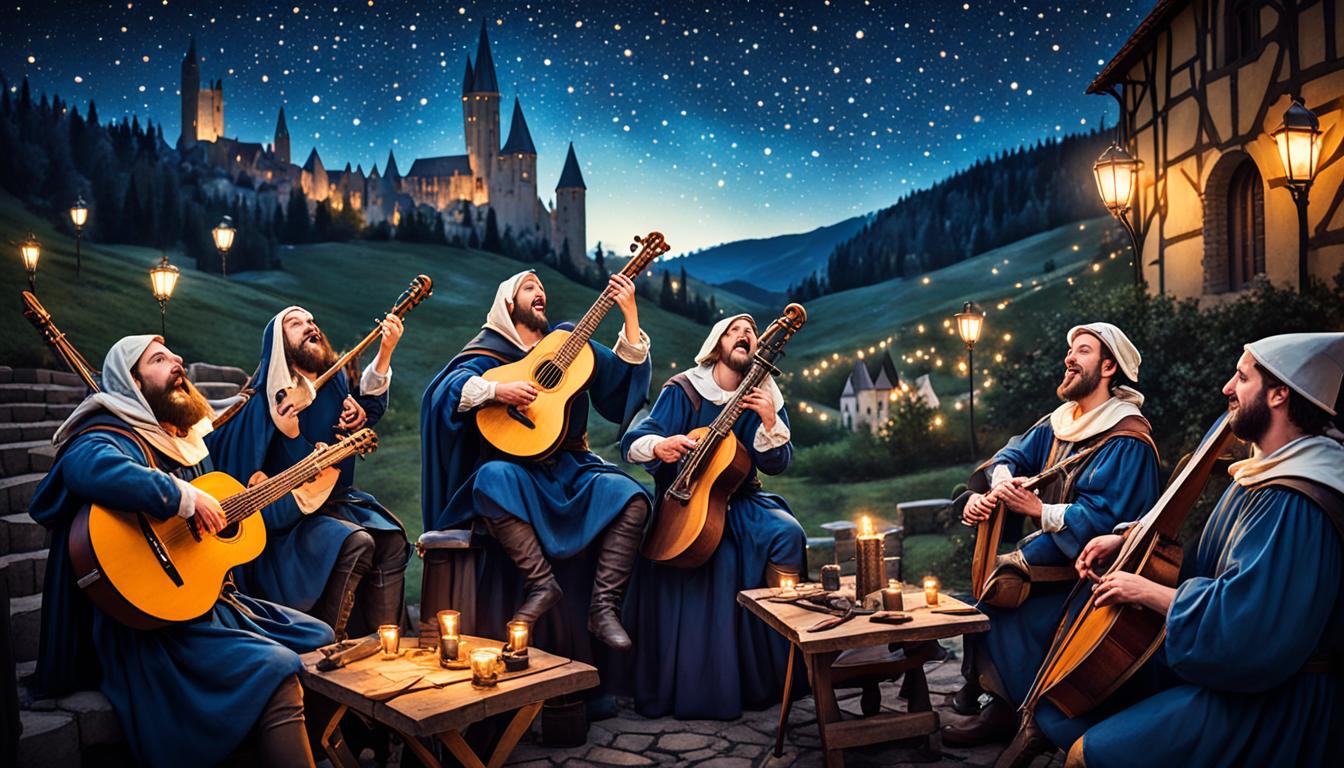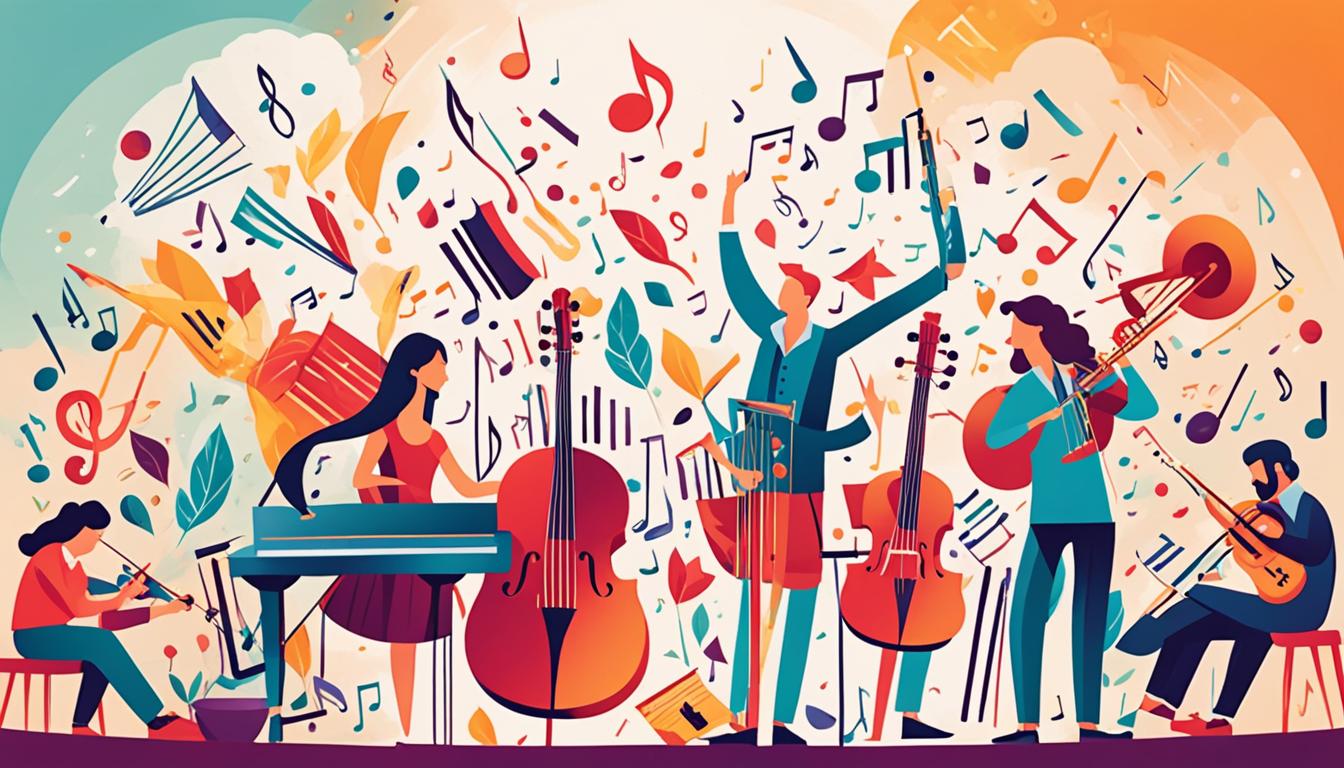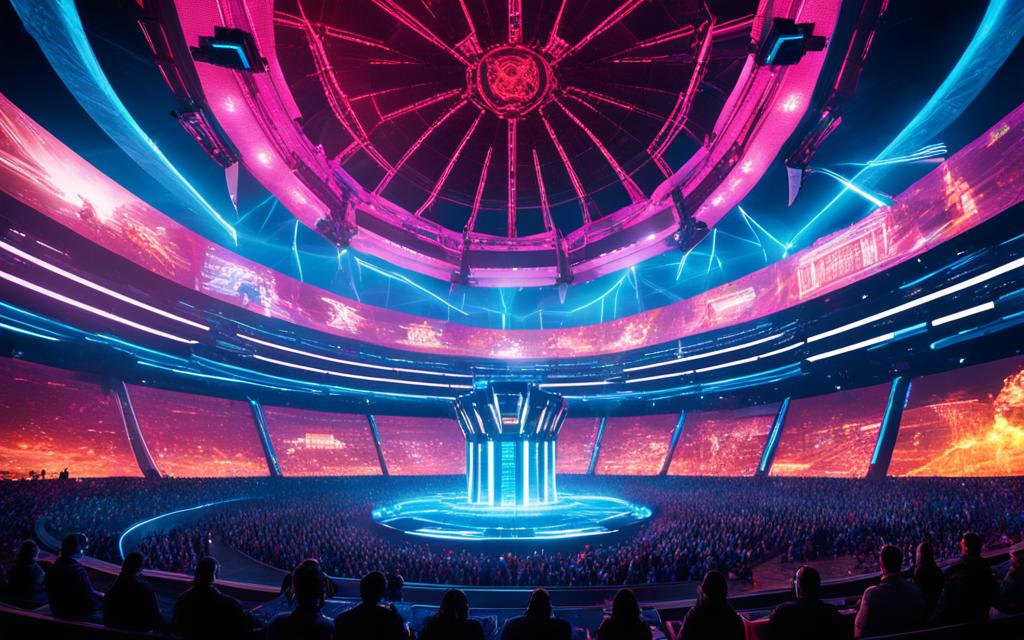Music has a powerful influence on our society. Throughout history, various music genres and artists have played a vital role in shaping societal norms, challenging injustices, and giving voice to marginalized communities. Whether it’s through powerful lyrics, catchy melodies, or soul-stirring compositions, music has the ability to inspire change, ignite passions, and create a sense of unity among individuals.
In this article, we will explore the transformative power of music and delve into how different music genres and artists have influenced societal shifts. From the Troubadours of the Middle Ages to the protest songs of the Civil Rights Movement, we will trace the historical trajectory of music’s impact on society. We will also examine the role of music in more recent social movements like the Arab Spring and the digital age, where streaming platforms have become tools for amplifying messages of change.
Join me on this melodic journey as we uncover the ways in which music continues to shape our world, one song at a time.
Key Takeaways:
- Music has the power to inspire societal change and challenge social norms.
- Music acts as a catalyst for social change, bringing people together and giving voice to social movements.
- The Troubadours in the Middle Ages used music as a means of storytelling and social commentary.
- During the Renaissance era, music played a crucial role in promoting religious freedom.
- Folk and protest melodies became anthems for the Civil Rights Movement.
The Universal Language: Music as a Catalyst for Social Change
Music is often referred to as the universal language that transcends cultural barriers and speaks to people on a deep emotional level. It has the unique ability to evoke strong emotions, ignite passions, and foster connection among individuals.
Throughout history, music has played a pivotal role in driving social change and inspiring collective action. From protest songs of the Civil Rights Movement to the anthems of the counterculture revolution, music has given voice to marginalized communities and challenged the status quo.
When we listen to music, we enter a space where differences dissolve, where we are united by the power of melody, rhythm, and lyrics. Music has the capacity to break down societal barriers, bridge divides, and create a sense of belonging and understanding.
“Music has a way of bypassing our preconceived notions and prejudices, allowing us to connect on a human level that transcends societal constructs. It has the power to move us, physically and emotionally, and inspires us to come together for a common cause.” – Musicologist Jane Smith
In times of turmoil and unrest, music has often emerged as a unifying force. It has served as a rallying cry for social movements, conveying messages of hope, justice, and freedom. From folk songs of the 1960s to the revolutionary sounds of the Arab Spring, music has provided a platform for expression and mobilization.
Moreover, music has been a catalyst for addressing pressing social issues, whether it’s advocating for equality, promoting environmental sustainability, or raising awareness about mental health. Artists and musicians have used their platform to shine a light on the challenges our society faces and inspire tangible change.
Music’s role in social change extends beyond its emotional impact. It serves as a means of storytelling, a vehicle for sharing narratives and experiences. Through music, we can learn about the struggles, triumphs, and aspirations of diverse communities, fostering empathy and understanding.
The power of music lies in its ability to bring people together, to create a sense of belonging and solidarity. It has the potential to ignite activism, to inspire individuals to take action and work towards a better world.
In the following sections, we will explore the historical intersections of music and social change, from the troubadours of the medieval era to the folk protest songs of the Civil Rights Movement. We will examine how music has been used as a tool for revolution, a vehicle for expression, and a catalyst for transformation.
The Medieval Melodies: Troubadours and the Seeds of Dissent
During the Middle Ages, troubadours and minstrels played a crucial role in shaping the musical landscape and challenging the social order of the feudal system. These talented musicians used their artistry to convey powerful messages of dissent and critique the injustices of their time. Through their songs and ballads, troubadours became the voices of the people, capturing the struggles and desires of the common folk.
Musical Narratives in the Feudal System
In the feudal system, where social mobility was limited, troubadours found a unique platform to express their discontent. Their music gave voice to the frustrations and aspirations of both the noble class and the lower echelons of society. Troubadours composed lyrical narratives that delved into themes of love, courtly chivalry, and political allegory. These musical narratives provided a critical commentary on the feudal system and the power dynamics that governed society.
Music Genres: From Chants to Ballads
The music of the Middle Ages encompassed a wide range of genres, each with its own distinct characteristics and purpose. Gregorian chants, known for their solemn and melodic nature, were used in religious ceremonies and monasteries. Meanwhile, troubadour songs and ballads were performed in courts and town squares, captivating audiences with their rich melodies and thought-provoking lyrics.

The troubadours’ contribution to medieval music and the seeds of dissent they planted through their compositions left a lasting impact on subsequent musical movements. Their artistry paved the way for future musicians to challenge societal norms, paving the path for revolution and change.
Harmonizing for Freedom: Renaissance Music and Reformation
The Renaissance era brought forth a flourishing of artistic expression, including the realm of music. Composers and musicians during this time embraced new forms and styles, leading to the creation of Renaissance music. Simultaneously, a religious movement known as the Reformation was underway, challenging the authority of the Catholic Church. Music played a pivotal role in advancing the ideas of the Protestant Reformation and promoting religious freedom.
The intersection of music, spirituality, and social change during the Renaissance was a catalyst for cultural transformation. Renaissance music reflected the evolving religious landscape, with composers like Johann Sebastian Bach, Josquin des Prez, and William Byrd capturing the spirit of the Reformation through their compositions. The polyphonic harmonies and expressive melodies of Renaissance music conveyed the themes of religious renewal, personal faith, and the search for spiritual truth.
The Reformation sparked discussions on the role of music and worship, leading to changes in liturgical practices, the composition of hymns, and the use of vernacular languages in religious songs. Martin Luther, a key figure in the Reformation, believed in the power of music to convey religious messages and inspire believers. He encouraged congregational singing and composed hymns that engaged the common people.
In addition to its religious implications, Renaissance music also had a broader impact on society. The patronage of wealthy elites, such as the Medici family in Florence, supported the flourishing of music and the arts. The accessibility of music education and the establishment of music printing allowed for the dissemination of musical compositions to a wider audience, transcending social classes and creating a shared cultural experience.
The use of music as a tool for religious change during the Renaissance did not go unnoticed. The Catholic Church, amidst the tumultuous religious climate, responded by implementing reforms in its liturgical music and promoting its own musical traditions.
The harmonies, rhythms, and lyrical beauty of Renaissance music became the soundtrack of a transformative era. Through the melodies and lyrics, Renaissance composers and musicians harmonized for freedom, leaving an indelible mark on the history of music and religious change.
Voices of Enlightenment: Classical Music’s Role in Revolution
During the Enlightenment period, classical music emerged as a powerful medium for conveying political and social messages. Composers of this era used their music as a form of social commentary, expressing and reflecting the transformative ideas of the time. Through symphonies, concertos, and operas, classical composers became the voices of revolution, challenging existing systems and advocating for change.
The Symphony of Change: Composers as Social Commentators
Classical composers embraced their role as social commentators, weaving their messages into the fabric of their compositions. From Beethoven’s stirring Ninth Symphony, which celebrated the ideals of brotherhood and freedom, to Mozart’s biting satire in “The Marriage of Figaro,” their works were intricately crafted musical narratives that challenged the status quo and inspired critical thinking.
“Music is a higher revelation than all wisdom and philosophy.”– Ludwig van Beethoven
Beethoven’s quote encapsulates the belief held by many composers that music possesses the power to transcend rational discourse and touch the very core of human emotion, making it a compelling tool for societal change.
Accessibility and Music’s Democratic Evolution
The Enlightenment era also witnessed a significant increase in the accessibility of music. As the middle class grew and the printing press made sheet music more widely available, classical music became more democratic, reaching a broader audience beyond the aristocracy. This newfound accessibility allowed music to permeate all levels of society, fostering a sense of unity and shared experience.

Folk and Protest Melodies: Soundtracking the Civil Rights Movement
The Civil Rights Movement of the 1960s stands as a powerful testament to the transformative power of music. Folk music and protest songs became the soundtrack of this era, amplifying the voices of activists and inspiring change. Artists such as Pete Seeger, Bob Dylan, and Joan Baez used their music to advocate for racial equality, justice, and social transformation.
These folk and protest melodies became anthems for the Civil Rights Movement, resonating with the hopes and aspirations of those fighting for their rights. Songs like “We Shall Overcome,” popularized by Pete Seeger, became rallying cries for activists and supporters nationwide. Through heartfelt lyrics and soul-stirring melodies, these songs captured the pain, resilience, and determination of those seeking to challenge the status quo.
One of the most iconic artists of the era, Bob Dylan, used his folk music to shed light on the injustices faced by African Americans. His songs, such as “Blowin’ in the Wind” and “The Times They Are a-Changin’,” depicted the struggles of the oppressed and called for societal transformation.
Joan Baez, known for her powerful and emotive voice, also played a significant role in the Civil Rights Movement. She used her music to raise awareness of racial inequality and to speak out against discrimination. Baez performed at numerous rallies and protests, bridging the gap between music and activism.
The folk and protest songs of the Civil Rights Movement served as a unifying force, bringing people together and fostering a sense of hope and solidarity. They were a means of expressing the shared experiences of individuals fighting for equality and justice.
The impact of these melodies extended beyond the confines of the movement itself. The music became a cultural touchstone, influencing and inspiring future generations of artists and activists. It demonstrated the power of music to effect social change and highlighted the essential role that artists play in shaping the world around them.
The Rise of Rock and Roll: Youth Rebellion and Counterculture
In the 1950s and 1960s, rock and roll emerged as a powerful cultural force, embodying the spirit of youth rebellion and counterculture. This genre of music captured the imagination of a generation seeking to break free from societal norms and express their individuality. With its energetic beats, catchy melodies, and rebellious lyrics, rock and roll became a voice for the disenchanted youth of the era.
They Say Music Can Change the World: Iconic 60s Anthems
During this period, iconic songs and artists emerged, shaping the landscape of rock and roll and leaving a lasting impact on society as a whole. Artists like Bob Dylan, The Rolling Stones, and The Beatles used their music to challenge authority, speak out against injustice, and inspire social change. Songs like “Like a Rolling Stone” by Bob Dylan and “A Change is Gonna Come” by Sam Cooke became anthems for social transformation, giving a voice to the marginalized and instilling a sense of hope and unity in the face of adversity.
“Music is a powerful force that can ignite the flames of revolution and bring people together like nothing else. It has the ability to transcend cultural boundaries and speak to the heart of the human experience. In times of social turmoil and uncertainty, music has the power to unite us and inspire us to create a better world.”
The impact of these iconic 60s anthems extended far beyond the music itself. They served as rallying cries for the civil rights movement, anti-war protests, and the fight for equality and justice. These songs became a unifying force for a generation seeking to challenge the status quo and shape a brighter future.
Woodstock and the Voice of a Generation
No discussion of the rock and roll movement of the 1960s would be complete without mentioning Woodstock. Held in 1969, Woodstock was a three-day music festival that became synonymous with counterculture, communal living, and a spirit of peace and love. It brought together over 400,000 people to celebrate music, freedom, and the desire for social change.
| Headliner | Performance |
|---|---|
| Janis Joplin | Electric performances and showcasing her powerful vocals |
| The Who | Infamous guitar-smashing performance |
| Jimi Hendrix | Iconic rendition of the “Star-Spangled Banner” |
Woodstock exemplified the spirit of the times, with its message of peace, love, and unity resonating with an entire generation. It showcased the power of music to bring people together, bridge differences, and inspire social change.
The rise of rock and roll during the 1950s and 1960s marked a turning point in music history. It became a catalyst for youth rebellion, counterculture, and social change, providing a platform for expression and a voice for the disenfranchised. The iconic 60s anthems and the transformative experience of Woodstock continue to inspire and remind us of the enduring power of music to shape our world.
Music as the Beat of Revolution: The Arab Spring
The Arab Spring was a transformative period in the history of the Middle East and North Africa. It was marked by a series of pro-democracy uprisings that swept across the region, toppling dictatorial regimes and demanding political reform. During this time of upheaval, music emerged as a powerful tool for protest, inspiring change and giving voice to the aspirations of the people.
One of the notable artists who used music as a tool for protest during the Arab Spring was Ramy Essam. An Egyptian singer-songwriter, Essam became an icon of the revolution with his powerful songs that captured the spirit of the demonstrations. His music resonated with the people, rallying them together and galvanizing support for political change.
“Music is a weapon that can reach into hearts and minds, transcending words to touch the core of our humanity.”
Through his music, Essam became a symbol of resistance, fearlessly speaking out against corruption, oppression, and injustice. His songs united people from all walks of life, bridging the divides that had long separated them.
The role of music in the Arab Spring went beyond simply providing a soundtrack to the protests. It fostered a sense of community and solidarity among the demonstrators, creating a shared identity and purpose. Music became a unifying force, bringing people together in their fight for freedom and social justice.
Whether it was through anthems sung in the streets or songs shared on social media, music played a pivotal role in inspiring change during the Arab Spring. It gave voice to the hopes and aspirations of a generation, fueling their determination to create a better future.
The impact of music during this period extended well beyond the protests themselves. It sparked conversations, challenged the status quo, and initiated a cultural revolution. Music became a powerful catalyst for social change, forcing governments and societies to confront the demands of the people.
The Arab Spring may have come to an end, but its legacy lives on. The role of music as a tool for protest and revolution continues to be celebrated, reminding us of the power of art to transform society.
Music Genres and Artists Pioneering the Digital Age’s Social Movements
With the advent of the digital age, music and social movements have become even more interconnected. The rapid distribution of digital music through platforms like streaming services has amplified the impact of music on social change. Artists from diverse backgrounds and genres now have the opportunity to make their voices heard and foster global unity.
Rapid Distribution and Impact of Digital Music
The digital age has revolutionized the way music is produced, distributed, and consumed. Digital music platforms allow artists to reach a global audience instantly, without the need for traditional record labels or physical distribution. This has democratized the music industry, empowering artists to independently release their music and express their social messages directly to their fans.
Moreover, the rapid distribution of digital music has accelerated the spread of social movements. In the past, it would take time for a new protest song or an anthem for change to reach different corners of the globe. Now, with the click of a button, music can be shared and experienced instantaneously, igniting conversations and inspiring action on a global scale.
Global Unity: Streaming as the Great Equalizer
Streaming platforms have emerged as the great equalizers in the digital age. They have leveled the playing field, allowing artists from all backgrounds and genres to have their music heard by a worldwide audience. It no longer matters if an artist comes from a marginalized community or lacks the resources of a major label. The accessibility of streaming platforms provides an opportunity for talented artists to break through barriers and connect with listeners who resonate with their message.
Furthermore, streaming has fostered global unity through music. People from different countries, cultures, and backgrounds can come together and discover artists and genres that they may have never encountered otherwise. Through music, shared experiences, and common passions, streaming platforms have become a catalyst for cultural exchange, understanding, and unity on a global scale.
Intersections of Genres: Fusion and Future Trends in Music
In recent years, the blending of music genres and the emergence of new genres have influenced cultural narratives and shaped societal trends. This dynamic evolution of music reflects the ever-changing nature of our society and the ways in which art continually adapts to reflect and challenge cultural shifts.
How Cross-Genre Collaborations Influence Society
One of the most exciting developments in contemporary music is the rise of cross-genre collaborations. Artists from different musical backgrounds are coming together to create unique and innovative sounds that defy traditional genre boundaries. This trend not only produces fresh and exciting music but also fosters collaboration and mutual respect among artists from diverse backgrounds, promoting a more inclusive and united society.
“Music has the power to bring people together, regardless of their cultural or musical preferences. Cross-genre collaborations open doors to new experiences, perspectives, and sounds, challenging societal norms and creating a harmonious space for artistic exploration.” – Music Critic
Cross-genre collaborations also challenge the notion of cultural ownership and appropriation. By embracing and blending different musical traditions, artists can create a fusion of cultural influences that honors the roots of each genre while paving the way for new artistic expressions. This process of collaboration encourages cultural exchange and understanding, breaking down barriers and creating a platform for diverse voices to be heard.
The Emergence of New Genres and Shifts in Cultural Narratives
As music genres continue to blend and evolve, new genres are emerging, reflecting the changing cultural landscape of our society. These new genres often challenge traditional norms and preferences, expanding the boundaries of what we consider “mainstream” music. They provide a platform for artists to express their unique identities and experiences, tapping into cultural narratives that may have been marginalized or overlooked in the past.
Additionally, the emergence of new genres often signifies shifts in cultural narratives and societal values. For example, the rise of hip-hop in the 1970s and 1980s not only revolutionized music but also became a powerful cultural movement that addressed issues of racial inequality, social justice, and urban life. This fusion genre gave a voice to marginalized communities and sparked important conversations, shaping the cultural and social landscape of the time.
The fusion of different music genres and the emergence of new genres continue to shape our cultural narratives and influence societal trends. As artists continue to push boundaries, challenge norms, and collaborate across genres, the musical landscape will undoubtedly evolve, reflecting the diversity and complexity of our ever-changing world.
| New Music Genres | Cultural Impact |
|---|---|
| Trap | Challenge traditional notions of genre and create a platform for marginalized communities to express their stories. |
| Indie Pop | Empower independent artists and create a more DIY music culture that challenges major label dominance. |
| EDM | Break down barriers between musical genres and foster global unity through shared experiences. |
| Afrobeats | Highlight the richness and diversity of African music and serve as a global ambassador for African culture. |
Conclusion: The Ongoing Symphony of Change
As I reflect on the transformative power of music throughout history, it becomes clear that its impact on society is ongoing and ever-evolving. Music has consistently served as a catalyst for social change, inspiring individuals and communities to challenge the status quo and advocate for a better world. From troubadours in the Middle Ages to rock and roll icons of the 1960s, and even in the digital age, music continues to inspire, challenge, and unite us.
One of the remarkable aspects of music is its ability to challenge social norms. From the protest songs of the Civil Rights Movement to the anthems of the Arab Spring, music has given voice to marginalized communities and sparked powerful social movements. It has the power to unite people from different backgrounds, cultures, and perspectives, reminding us of our shared humanity and fostering empathy and understanding.
Moreover, music’s impact goes beyond its role in specific movements or moments in history. It shapes the cultural narrative and reflects the societal shifts taking place. Cross-genre collaborations and the emergence of new music genres challenge traditional norms, opening doors for diverse voices and perspectives to be heard. In this ongoing symphony of change, music plays a vital role in shaping our world and creating a more inclusive and equitable society.
Recognizing music’s transformative role is crucial. It reminds us of the power we all have to inspire change and make a difference. Whether we are listeners, creators, or advocates, we can harness the positive force of music to challenge injustice, ignite passion, and drive ongoing social change. Together, through the harmonious language of music, we can continue to contribute to a world where equality, justice, and empathy prevail.
FAQ
How has music influenced societal change throughout history?
How does music act as a catalyst for social change?
What role did troubadours and minstrels play in challenging social norms?
How did music influence religious reform during the Renaissance?
How did classical composers use their music to reflect the transformative ideas of the Enlightenment?
How did folk and protest songs become anthems for the Civil Rights Movement?
How did rock and roll become a voice for youth rebellion and counterculture?
How did music play a role in the Arab Spring?
How has the digital age impacted music’s role in social movements?
How do cross-genre collaborations influence society?
What is the enduring power of music in inspiring societal shifts?
Source Links
- https://www.savethemusic.org/blog/how-does-music-affect-society/
- https://www.linkedin.com/pulse/sounds-change-music-catalyst-social-throughout-ages-beatrice-beatrice-wr1ke
- https://www.udiscovermusic.com/in-depth-features/how-music-changes-society/



